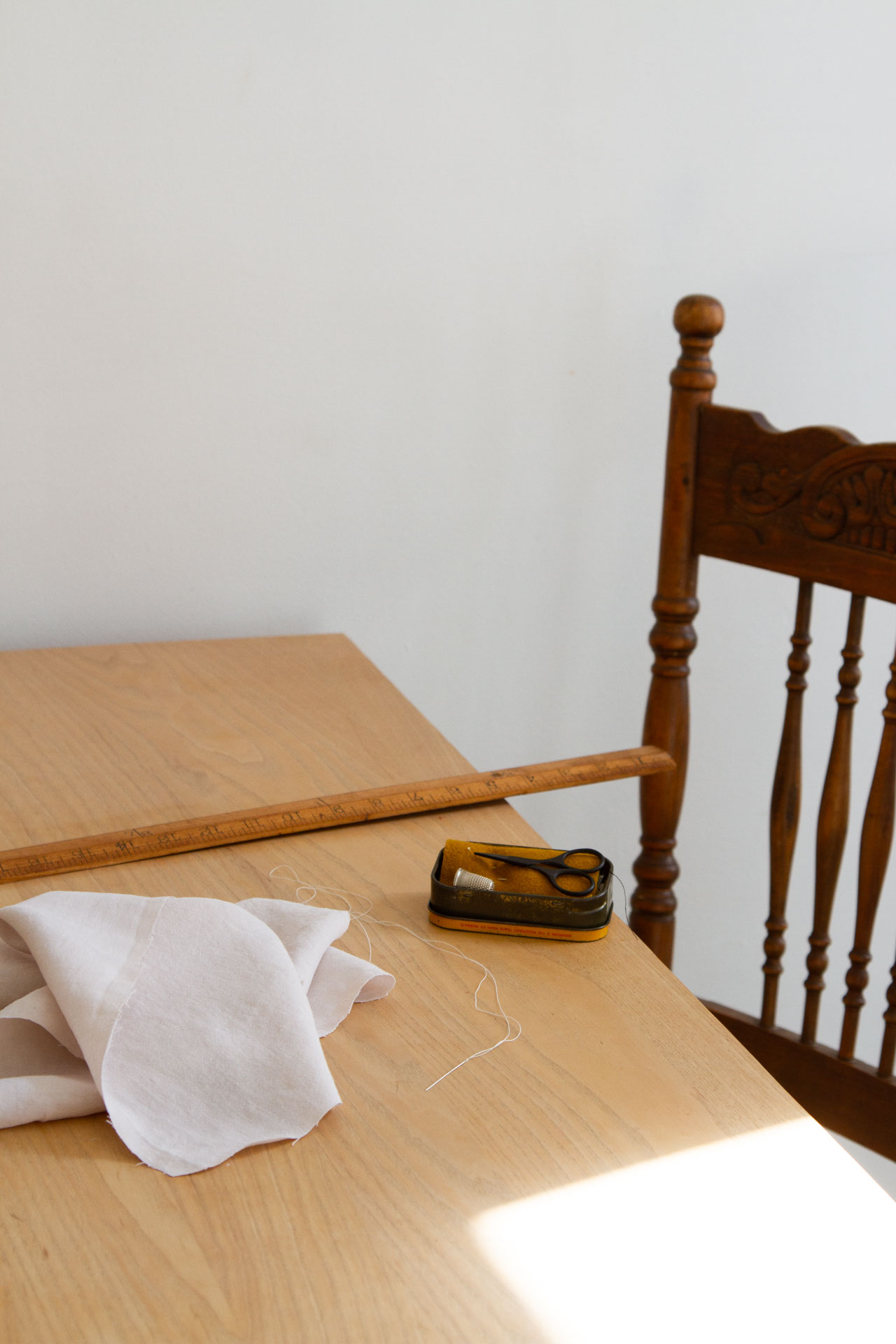
There’s a part of me that can’t quite square the fact that I’m writing to encourage anyone to hand stitch their own hankies with the realities of my own daily life. When there are dishes to be done and children to be picked up from school and upcoming elections to knock doors about, who on Earth has the time to stitch a tiny rolled hem around the perimeter of a square of fabric? And why would they? A handkerchief already stitched and ready to spring into action is not exactly hard to come by. Our local second-hand/vintage store has, at any given moment, an enormous basket full of them. Many of them are finely stitched by hand or by machine and cost just a few dollars. Closer to home, I have a stack passed to me from grandparents and grandparent-like figures. And yet here I am, with the second hankie I have made in the last two months, urging you to do the same.
The first hankie I made, I stitched from a square of a favorite nightgown that had split under the armpits but was perfectly worn in all the right ways everywhere else. That one’s cotton and small—15 square-inches of perfection. This one I cut slightly larger—18 inches—from a linen top sheet that had survived what the bottom sheet hadn’t. They’re both big enough to tie around my neck in a jaunty little knot, but they’re equally useful to have knotted onto the handle of any passing tote and ready to get to work as bodega apple-shiner, lost tooth-carrier, snack-wrapper, nose-wiper, etc.
As usual, it was Rose who convinced me this would be a good use of an hour.
At her urging, I used a rolled hem stitch, which is simple enough to get the hang of and delightful in the way that it curls in on itself. The tiny handmade stitches are just what the worn delicate cotton of my first hankie needed and the process so satisfying I used it again when I decided to make another one out of my linen sheet. In terms of timing, I was able to make this last one, start to finish, while listening to an episode of the Maintenance Phase podcast and I don’t regret at all the 55 minutes I spent chortling along with the hosts and gasping at the duplicity of Dr. Bragg.
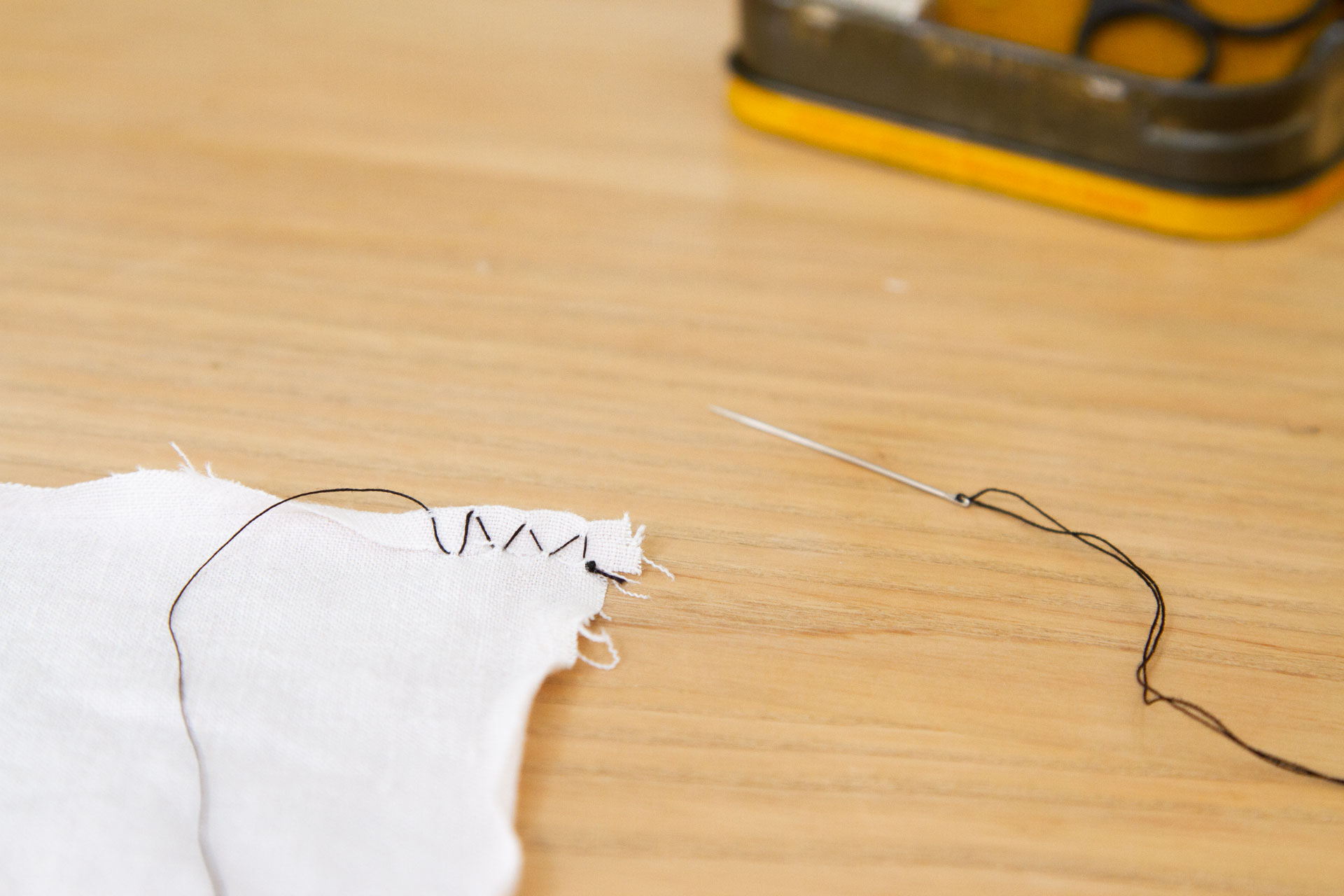
Below, I used black thread on what started as a grey linen sheet to help you better see what I was up to. To make a rolled hem, I started by folding over the edge of the fabric. You can press it with an iron if you’d like, but I’ve found just my finger tips are good enough for getting a little crease. From there the process is simple. I started by anchoring my thread with a stitch made just below the top raw edge of the fold I’d made. Next, I inserted the needle toward the top of the folded edge at a slight angle away from the bottom stitch and catching just a few threads. I left the stitches flat (as opposed to pulling them tight) and continued in a zig-zag pattern. (Each bottom stitch is made just below the raw edge of the folded fabric and each top stitch is made toward the top of the folded edge. Here’s a video in case it’s helpful!)

After I made about five stitches, I gently pulled the thread tight. This draws the top edge of the fabric down to the bottom, concealing the zig-zag. I continued in this way around the perimeter of the square, pulling the thread tight—and rolling the hem—every five stitches or so.
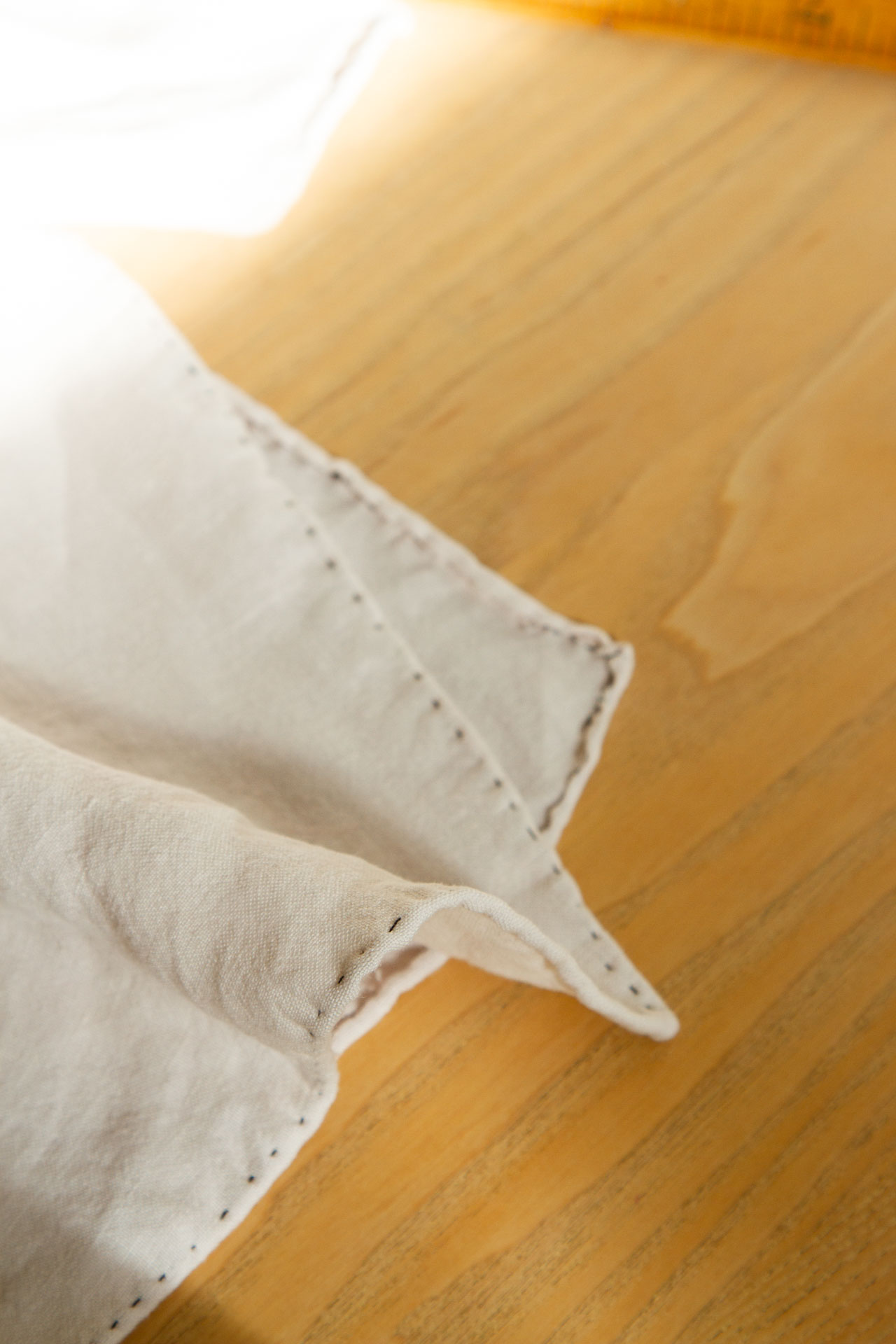
The result is a hemmed square of fabric. But it’s more than that. It’s useful and practical and has the unique and particular quality of something that’s been stitched by hand. It’s a practice in pragmatism and patience. It’s a practice in practice. It’s stitch by stitch, something made new again.

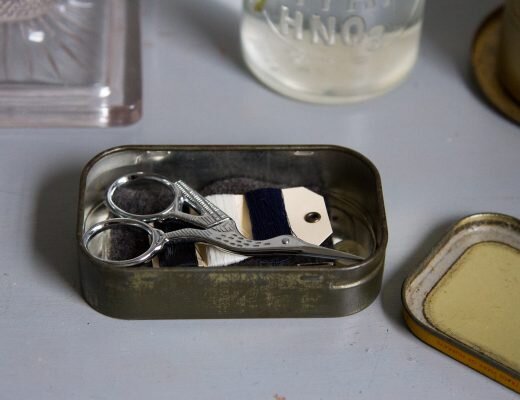

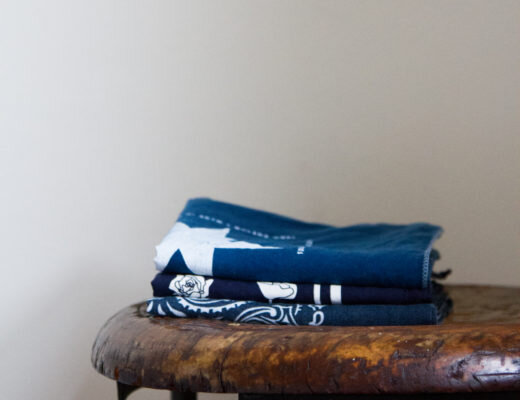
5 Comments
I’ve made these for years 🙂 It is such a satisfying and calming activity for me. It’s really neat to see it here. The hems hold up well to repeated washings and they feel special. Good instructions, thank you.
Lovely. Practical handwork that leaves space for essential daydreams.
I think small projects like that are great especially when you have a full life. When I do a 15-minute project now and then it’s actually a bit of rest for me; I can sit and do something repetitive without having to think much. But most importantly, no one in my family interrupts, which they do when they see me trying to rest in a more predictable way . Seems whenever I lay down someone has a question, needs something now….
This is inspiring and now I’m eyeing bits of fabric around the house in a new light. Also I listened to that Maintenance Phase episode on Dr. Bragg last night and chortle is a good word for what I was doing as well. And no spoilers but that ending! Who knew…
Thank you for these instructions, I have always wondered how the rolled hems are made, now will have to try it.
Comments are moderated.